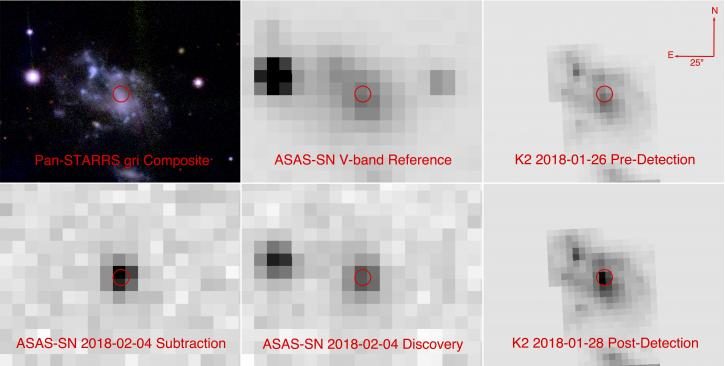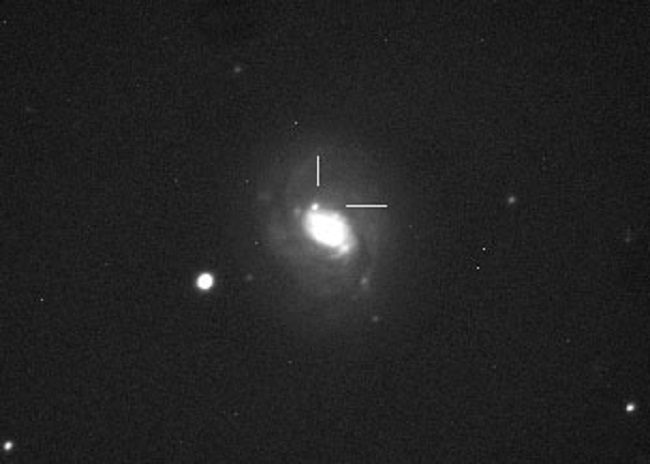
© Carnegie Institution for ScienceSix images showing the host galaxy of the newly discovered supernova ASASSN-18bt. The top row shows three images from before the explosion taken by Pan-STARRS, ASAS-SN, and Kepler. The bottom row shows images from ASAS-SN and Kepler after the supernova was visible. The discovery image from the ASAS-SN team is in the bottom middle. To its left is a version with all the surrounding stars eliminated, showing only the new supernova’s light output. On the bottom right is a Kepler image from after the supernova was detected. Kepler’s precision was crucial to understanding the light from ASASSN-18bt in the early hours after the explosion.
Pasadena, CA
- A supernova discovered by an international group of astronomers including Carnegie's
Tom Holoien and
Maria Drout, and led by University of Hawaii's Ben Shappee, provides an unprecedented look at the first moments of a violent stellar explosion. The light from the explosion's first hours showed an unexpected pattern, which Carnegie's
Anthony Piro analyzed to reveal that
the genesis of these phenomena is even more mysterious than previously thought.Their findings are published in a trio of papers in
The Astrophysical Journal and
The Astrophysical Journal Letters. (You can read them
here,
here, and
here.)
Type Ia supernovae are fundamental to our understanding of the cosmos. Their nuclear furnaces are crucial for generating many of the elements around us, and they are used as cosmic rulers to measure distances across the universe. Despite their importance, the actual mechanism that triggers a Type Ia supernova explosion has remained elusive for decades.
That's why catching them in the act is crucial.
Astronomers have long tried to get detailed data at the initial moments of these explosions, with the hope of figuring out how these phenomena are triggered. This finally happened in February of this year with the discovery of a Type Ia supernova called ASASSN-18bt (also known as SN 2018oh).


Comment: Interestingly, this past winter saw the darkest months on record for some parts of Europe:
- Winter of Discontent in France: Protests, Endless Dark Skies, And Crazy New Laws
- A dark December: In one month Moscow totals 6 minutes of sunlight while Belgium bears just 10.5 hours
- Study: Cosmic rays trigger climate change on Earth by increasing cloud cover
And for more on the changes our planet is experiencing, check out SOTTs monthly documentary: SOTT Earth Changes Summary - October 2018: Extreme Weather, Planetary Upheaval, Meteor Fireballs